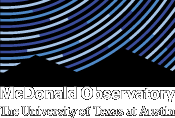Webb Telescope Detects Most Distant Active Supermassive Black Hole
BY MARC AIRHART
Researchers have discovered the most distant active supermassive black hole to date with the James Webb Space Telescope (JWST). The galaxy, CEERS 1019, existed about 570 million years after the big bang, and its black hole is less massive than any other yet identified in the early universe.

